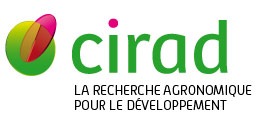Effect of reduced light and rainshelter on Coffee Berry Disease due to Colletotrichum kahawae
Mouen Bedimo J.A., Nyassﺣ۸ S., Cilas C., Nottﺣ۸ghem J.L., Bieysse D.. 2010. In : Wery Jacques (ed.), Shili-Touzi I. (ed.), Perrin A. (ed.). Proceedings of Agro 2010 : the XIth ESA Congress, August 29th - September 3rd, 2010, Montpellier, France. Montpellier : Agropolis international, p. 443-444. ESA Congress. 11, 2010-08-29/2010-09-03, Montpellier (France).
Arabica coffee production in Africa is strongly threatened by the attacks of Colletotrichum kahawae, the pathogen of Coffee Berry Disease (CBD) which can cause up to 80% harvest losses (Masaba et al., 1992; Waller et al., 1994). The traditional control of this disease requires 8 to 12 annual applications of fungicide in high-altitude areas (> 1600m) where the disease incidence is high (Bieysse et al., 2002). However, pruning of the coffee-trees and association with fruit trees, generally practised in the small farms, could reduce CBD's epidemics (Mouen Bedimo et al., 2007).
Mots-clﺣ۸s : colletotrichum; coffea arabica; cameroun; colletotrichum kahawae
Documents associﺣ۸s
Communication de congrﺣ۷s
Agents Cirad, auteurs de cette publication :
- Cilas Christian — Bios / UMR AGAP
